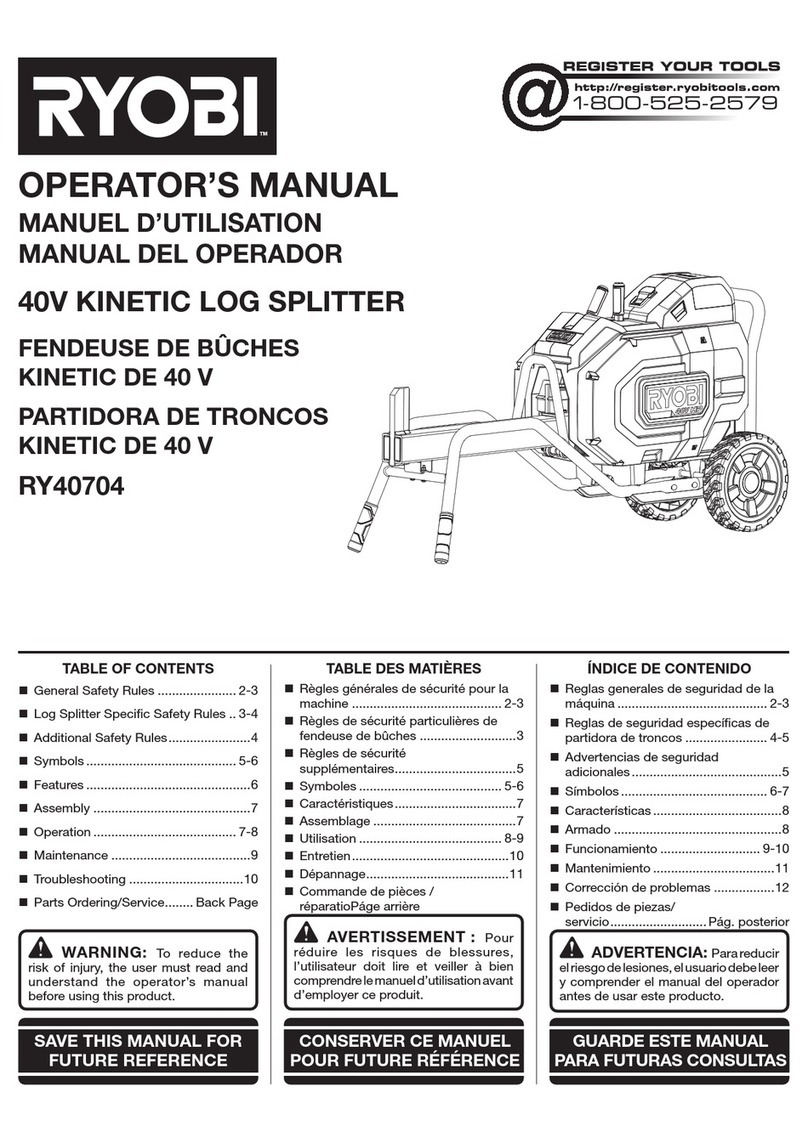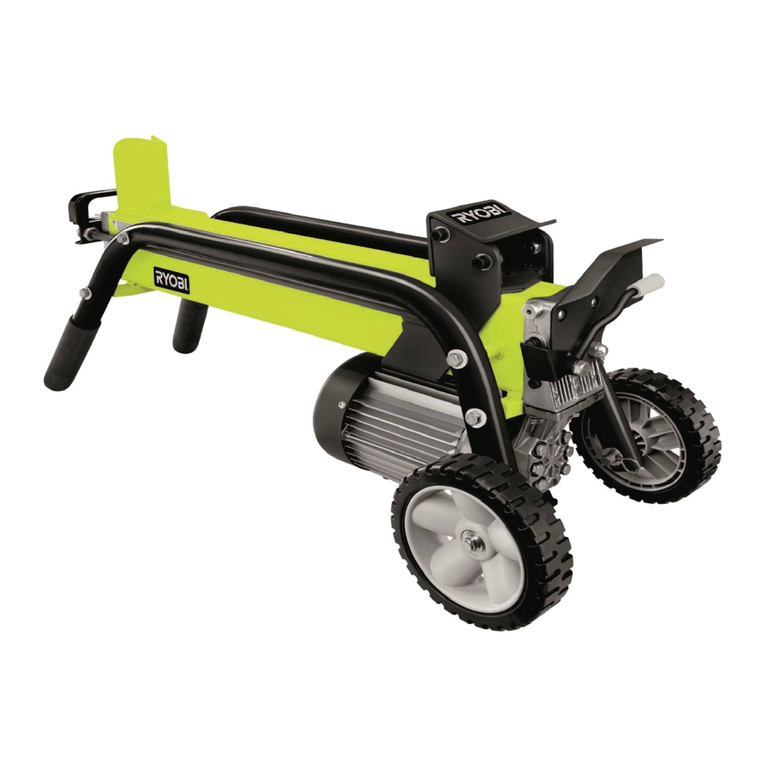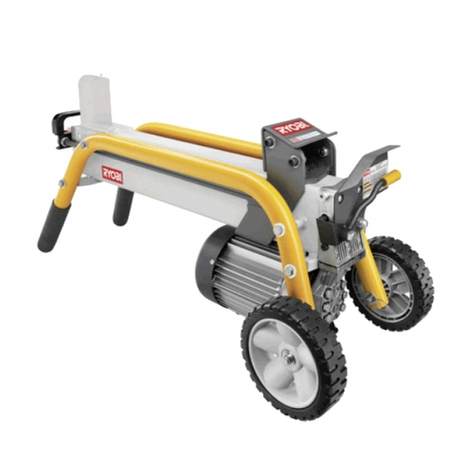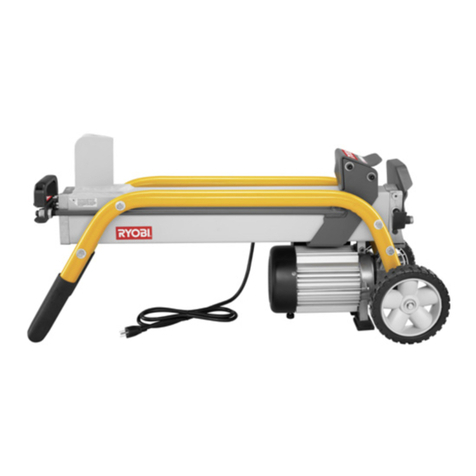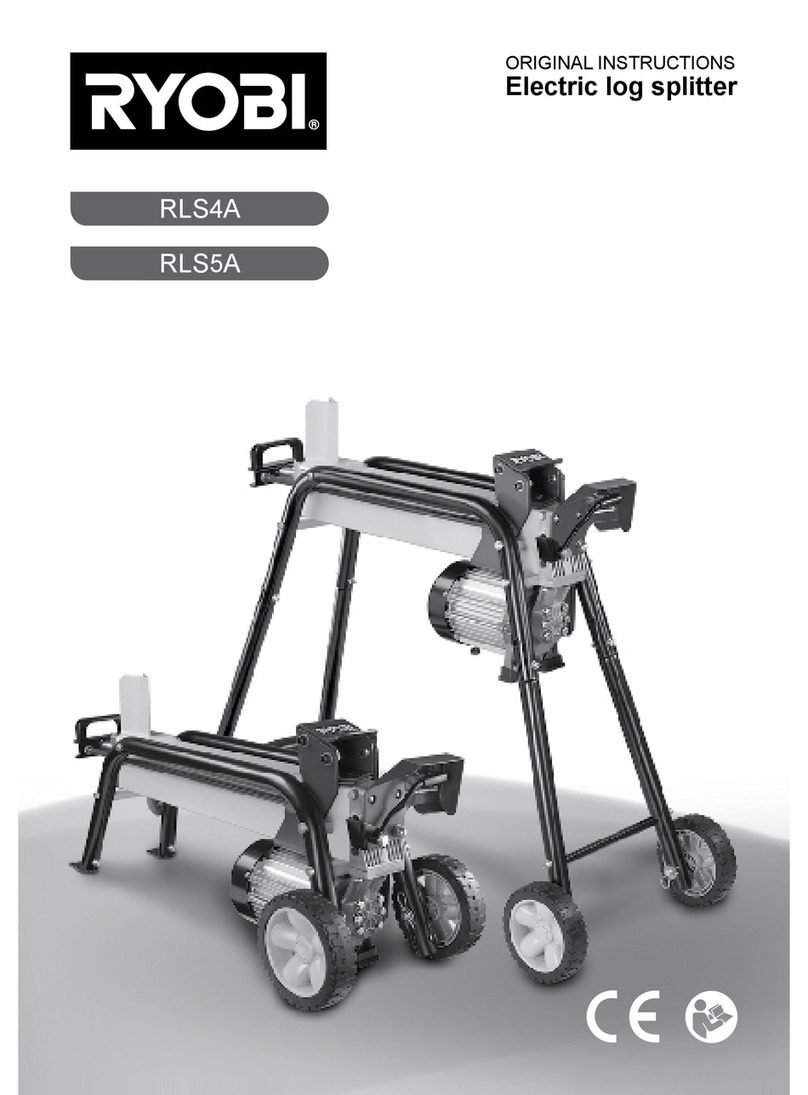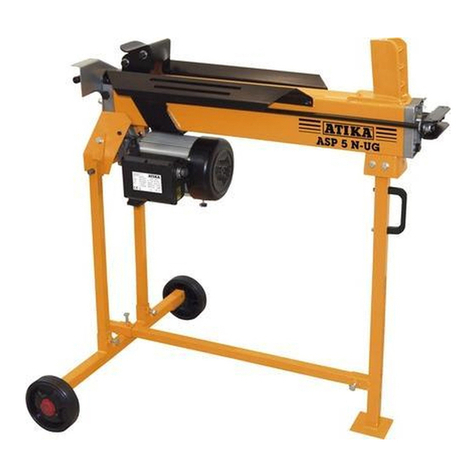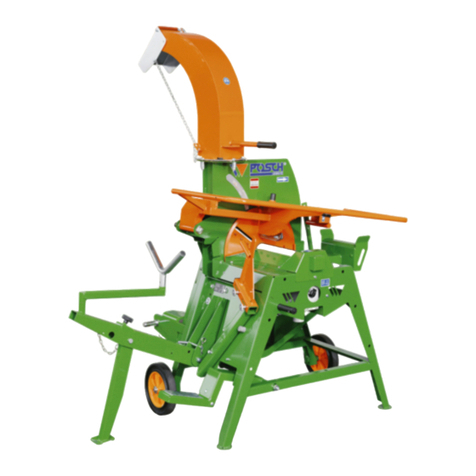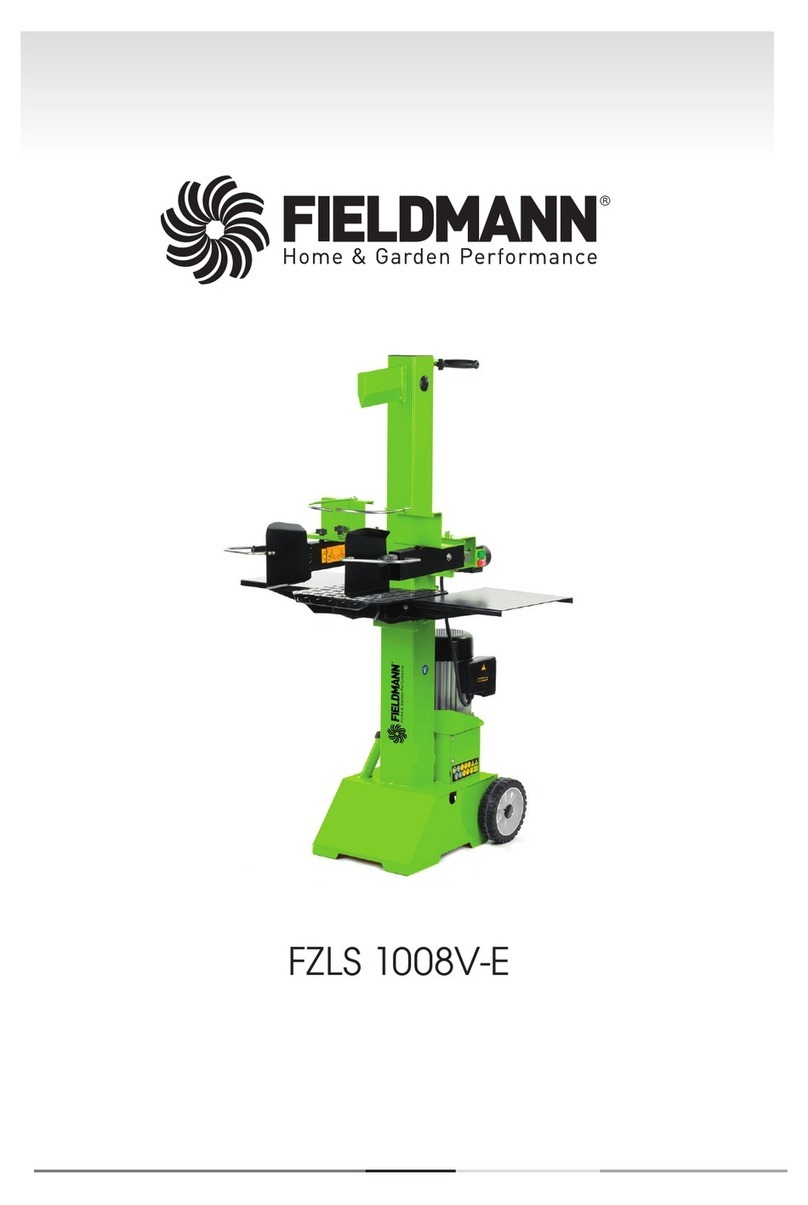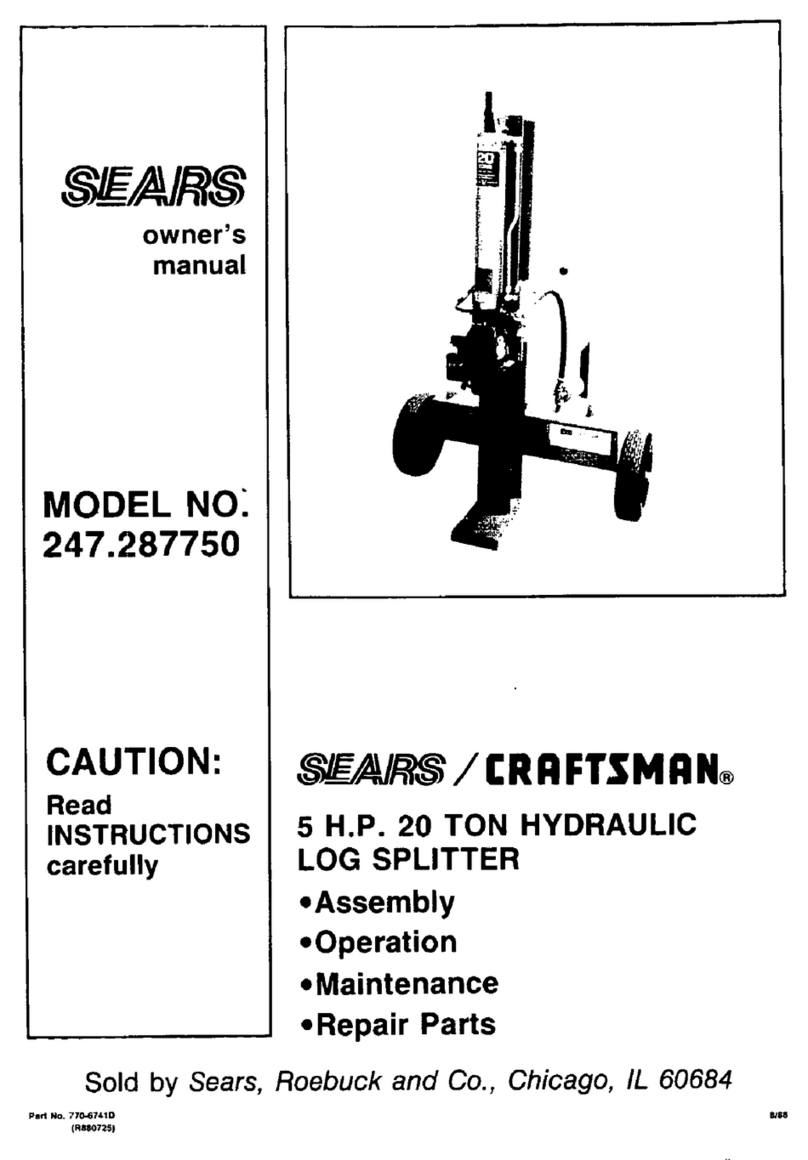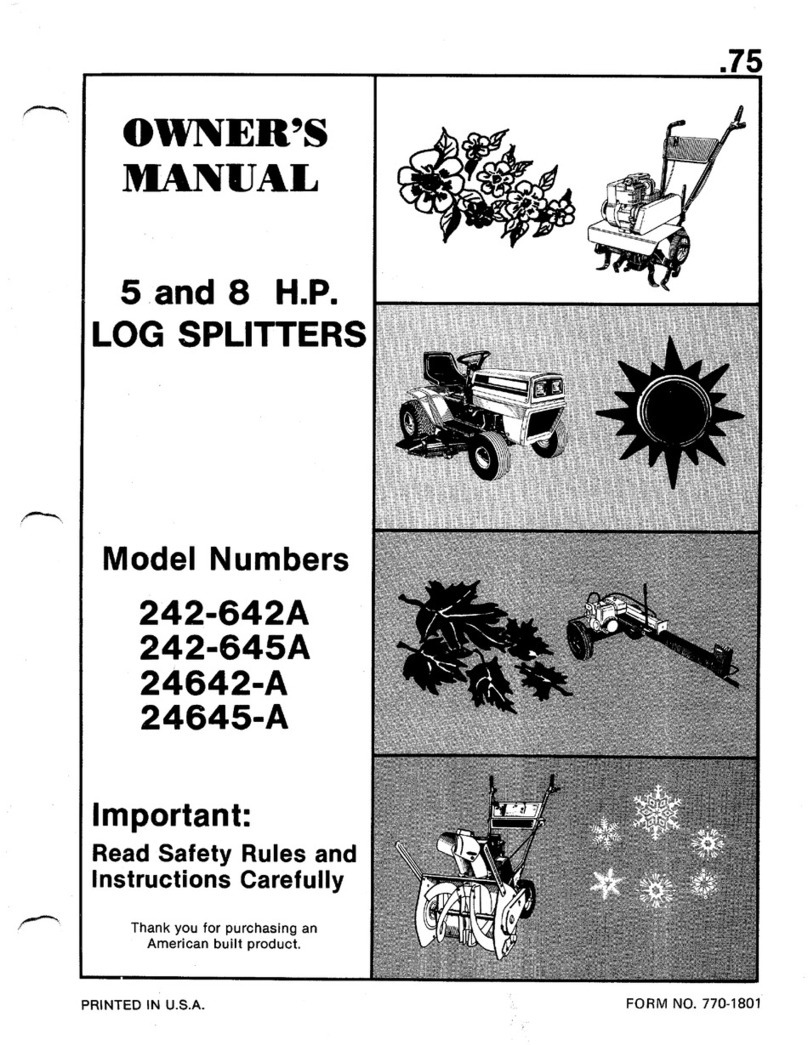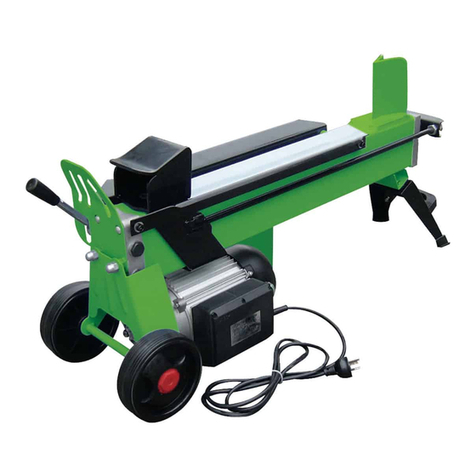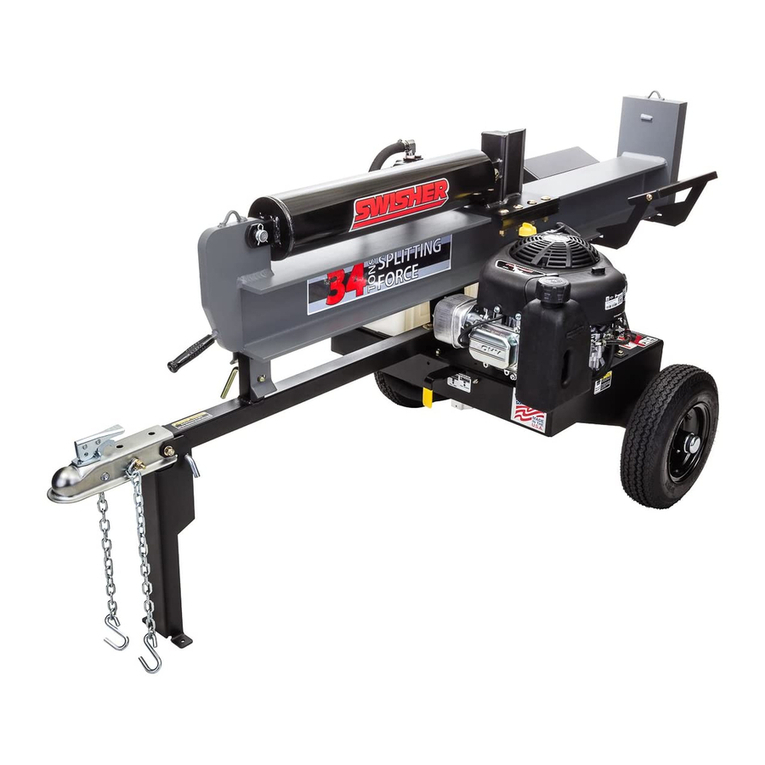
3 — English
GENERAL SAFETY RULES
LOG SPLITTER SPECIFIC SAFETY RULES
DO NOT ALLOW anyone to operate the log splitter who
has not read the operator’s manual or has not been
instructed on the safe use of the splitter.
NEVER ALLOW CHILDREN OR UNTRAINED ADULTS
TO OPERATE THIS MACHINE.
IF SOMEONE is helping bring logs to be split, DO NOT
start the machine until that person is clear of the area by
at least 10 feet. Only one person should operate, load,
and unload the log splitter.
NEVER ALLOW ANYONE TO SIT OR RIDE ON THE
MACHINE.
NEVERTRANSPORTANYTHING ORANYONE ONTHE
LOG SPLITTER.
HIGH FLUID PRESSURES ARE DEVELOPED IN
HYDRAULIC LOG SPLITTERS. Pressurized hydraulic
fluidescaping througha pinholeopeningcan punctureskin
and cause serious injury and/or severe blood poisoning.
Observe the following instructions at all times:
a) Do not operate the log splitter if it has pinhole leaks,
cracks,and/or anydamageto thepressurizedhydraulic
fluid system, including the bleed screw, oil drain bolt/
dipstick,hydraulic fluid tank/bolts,fittings, orany other
hydraulic fluid system component.
b) Stop the motor and relieve hydraulic system pressure
before changing or adjusting fittings, hoses, tubing,
or other system components.
c) Do not adjust the pressure settings of the pump or
value.
d) Ensure all hydraulic fluid system components are
secured and in good condition before starting the
log splitter. Keep your body and hands away from
pinholes, cracked, or damaged bleed screw, oil drain
bolt/dipstick, hydraulic fluid tank/bolts, fittings, or
other hydraulic fluid system components. Leaks can
be located by passing cardboard or wood over the
suspected area. Look for discoloration. If injured by
escaping fluid, see a doctor at once. Serious injury,
infection,and/or reactioncandevelop ifpropermedical
treatment is not administered immediately.
KEEP THE OPERATOR ZONE and adjacent area clear
for safe, secure footing.
LOG SPLITTERS SHOULD BE USED ONLY for splitting
wood. DO NOT use for other purposes.
MAKE SURE THE LOG SPLITTER is on a level surface.
Block the splitter as required to prevent unintended
movement.
ALWAYS OPERATE the splitter from the manufacturer’s
indicated operator zone. The operator zone is in the right
rear area as facing the log splitter controls and never
directly behing the ram.
LOGS TO BE SPLIT ON RAM-TYPE UNITS should be
cut as flat as possible on each end.
ALWAYS keep hands and feet clear of moving parts and
partially split logs during the splitting operation.
NEVER attempt to split logs larger than 10 in. in diameter
or 20-1/2 in. in length. Only split dry whole logs and not
partial, unevenly shaped, logs that will not sit flat on the
work table, or logs that will not sit flat against the ram.
Only split one log at a time and do not attempt to split
stacked logs. Some types of wood are harder to split than
others. If the log splitter is having trouble splitting a log,
never continue to try for longer than five seconds.
BEthoroughlyfamiliar with allcontrolsand withthe proper
use of the log splitter.
ALWAYS wear eye protection with side shields marked to
comply with ANSI Z87.1. Failure to do so could result in
objects being thrown into your eyes, resulting in possible
serious injury.
Store idle power tools out of the reach of children and
do not allow persons unfamiliar with the power tool
or these instructions to operate the power tool. Power
tools are dangerous in the hands of untrained users.
Maintain power tools and accessories. Check for
misalignment or binding of moving parts, breakage
of parts and any other condition that may affect the
power tool’s operation. If damaged, have the power
tool repaired before use. Many accidents are caused
by poorly maintained power tools.
Keepcutting toolssharp andclean.Properlymaintained
cutting tools with sharp cutting edges are less likely to
bind and are easier to control.
Use the power tool, accessories and tool bits etc.
in accordance with these instructions, taking into
account the working conditions and the work to be
performed. Use of the power tool for operations different
from those intended could result in a hazardous situation.
Keep handles and grasping surfaces dry, clean and
free from oil and grease. Slippery handles and grasping
surfaces do not allow for safe handling and control of the
tool in unexpected situations.
SERVICE
Have your power tool serviced by a qualified repair
personusing onlyidentical replacementparts. Thiswill
ensure that the safety of the power tool is maintained.







